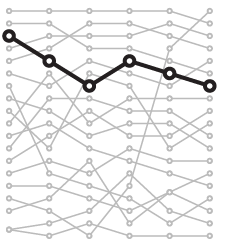Occupation and Salary Rankings, Each Decade Since 1970
Job types changed over the years, because there were these things called computers that created occupations and shifted others. How did income change for different jobs, relative to everyone else? The chart below ranks occupations over the decades by income.
How Jobs Ranked, By Income and Year
Search for or select an occupation. Monetary values are in the survey year’s dollars.
This is based on data from the Decennial Census from each decade. The 2022 data is based on responses to the American Community Survey.
Listed occupations are from a harmonized classification scheme maintained by IPUMS, and the scheme uses the Census Bureau’s 2010 ACS occupation classification scheme.
Physicians and surgeons stick at the top for every year, whereas counter attendants and cafeteria workers stick at the bottom.
I’m curious about photographers starting at the upper half and move closer to the bottom in later years. Is this because it’s gotten cheaper to process digital photos? Are there just more people who call themselves photographers with easier-to-access equipment? That requires more looking into.
However, from this rank point of view, the most interesting bits are the jobs that don’t exist at first and then show up in the 2000s and vice versa. For example, computer and information systems managers and software developers (and most of the specialized jobs that involve programming) fill a lot of the top spots.
I can’t say I’m happy about statisticians losing their job title to mathematical science occupations not elsewhere classified (nec).
Also, what happened to funeral directors? I have so many questions.
Notes
I analyzed and processed Census data downloaded via IPUMS in R. The interactive chart was made with D3.js. Occupations are sorted by median total income, and ties were broken by comparing 75th percentiles of total income.
Become a member. Support an independent site. Make great charts.
See What You GetFlowingData is made possible by supporting members. Since 2007, I, Nathan Yau, a real person, have been analyzing and visualizing data to help more people understand and appreciate it in their everyday lives.
If you liked this or want to make similar data things, please consider supporting this small corner of the internet. You get unlimited access to visualization courses, tutorials, and extra resources. Thanks. — Nathan


